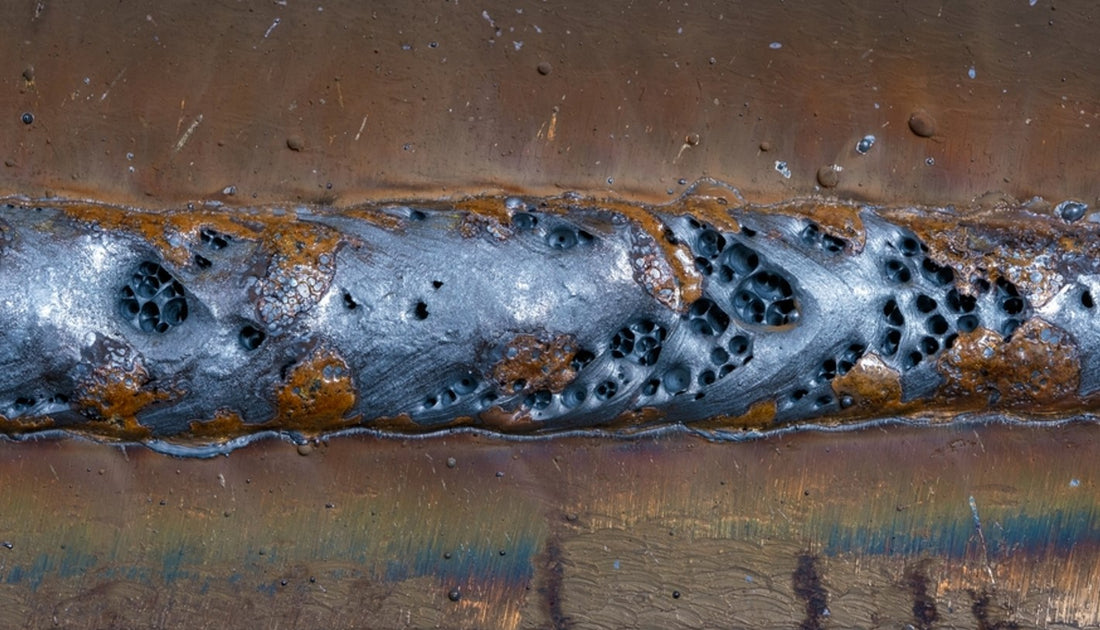Comprehending Porosity in Welding: Exploring Causes, Effects, and Avoidance Strategies
Porosity in welding is a persistent challenge that can dramatically influence the quality and integrity of welds. As professionals in the welding market are cognizant, comprehending the reasons, impacts, and prevention methods connected to porosity is critical for accomplishing durable and reputable welds. By diving into the origin of porosity, analyzing its damaging effects on weld high quality, and exploring reliable avoidance techniques, welders can boost their understanding and abilities to produce top quality welds regularly. The intricate interaction of aspects adding to porosity needs a comprehensive understanding and a positive strategy to ensure successful welding results.
Typical Sources Of Porosity
Contamination, in the form of dirt, oil, or rust on the welding surface area, develops gas pockets when heated, leading to porosity in the weld. Inappropriate securing takes place when the securing gas, generally made use of in procedures like MIG and TIG welding, is incapable to fully protect the liquified weld pool from responding with the surrounding air, resulting in gas entrapment and subsequent porosity. Furthermore, inadequate gas protection, often due to inaccurate circulation rates or nozzle positioning, can leave parts of the weld unguarded, enabling porosity to form.
Results on Weld Quality
The presence of porosity in a weld can dramatically compromise the general top quality and integrity of the bonded joint. Porosity within a weld produces gaps or tooth cavities that compromise the structure, making it extra susceptible to fracturing, rust, and mechanical failing. These gaps act as anxiety concentrators, lowering the load-bearing ability of the weld and increasing the probability of premature failing under used tension. In addition, porosity can likewise serve as prospective websites for hydrogen entrapment, more intensifying the destruction of the weld's mechanical buildings.
Furthermore, porosity can prevent the efficiency of non-destructive screening (NDT) techniques, making it challenging to detect various other flaws or interruptions within the weld. This can cause considerable security worries, particularly in essential applications where the architectural integrity of the bonded parts is vital.

Prevention Techniques Introduction
Offered the detrimental effect of porosity on weld top quality, reliable prevention methods are crucial to keeping the architectural stability of welded joints. Furthermore, picking the appropriate welding specifications, such as voltage, present, and take a trip rate, can help decrease the risk of porosity formation. By incorporating these avoidance methods right into welding practices, the incident of porosity can be substantially lowered, leading to stronger and extra trustworthy bonded joints.
Importance of Appropriate Shielding
Appropriate securing in welding plays a crucial role in preventing atmospheric contamination and guaranteeing the stability of welded joints. Protecting gases, such as argon, helium, or a mixture of both, are frequently used to shield next the weld swimming pool from responding with aspects in the air like oxygen and nitrogen. When these reactive elements enter contact with the hot weld pool, they can cause porosity, causing weak welds with reduced mechanical residential or commercial properties.

Poor protecting can result in numerous issues like porosity, spatter, and oxidation, jeopardizing the architectural integrity of the bonded joint. As a result, sticking to correct protecting practices is vital to generate high-quality welds with minimal problems and make sure the longevity and dependability of the welded components (What is Porosity).
Surveillance and Control Methods
Exactly how can welders efficiently monitor and regulate the welding procedure to ensure optimum results and prevent issues like porosity? By continually keeping an eye on these variables, welders can recognize deviations from the ideal conditions and make instant modifications to prevent porosity development.

Additionally, redirected here carrying out appropriate training programs for welders is important for monitoring and managing the welding procedure efficiently. What is Porosity. Informing welders on the relevance of keeping consistent specifications, such as correct gas protecting and take a trip speed, can aid prevent porosity issues. Regular evaluations and accreditations can also ensure that welders excel in tracking and managing welding procedures
In addition, the use of automated welding systems can improve tracking and control capabilities. These systems can specifically control welding parameters, decreasing the possibility of human error and making sure consistent weld high quality. By combining advanced surveillance modern technologies, training programs, and automated systems, welders can effectively check and control the welding procedure to reduce porosity flaws and achieve high-quality welds.
Final Thought

Comments on “What is Porosity in Welding: Best Practices for Avoiding Porous Welds”